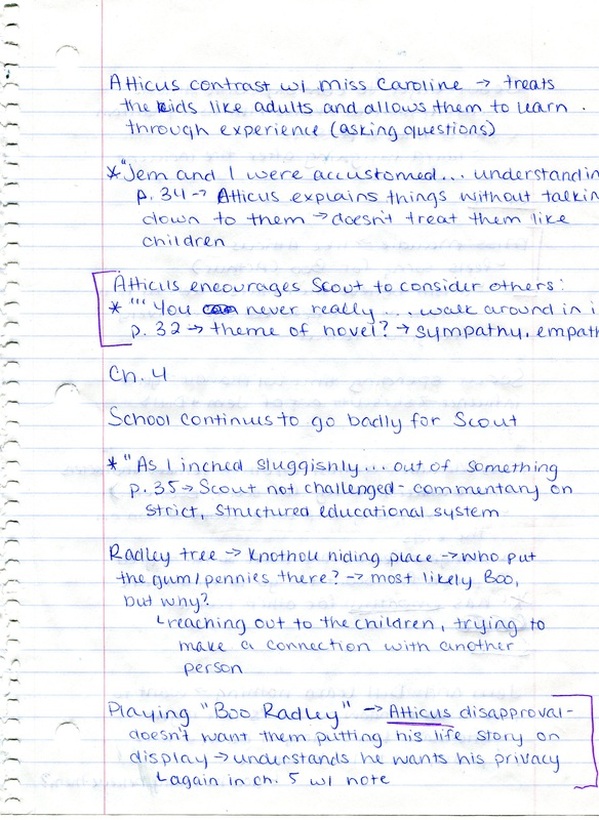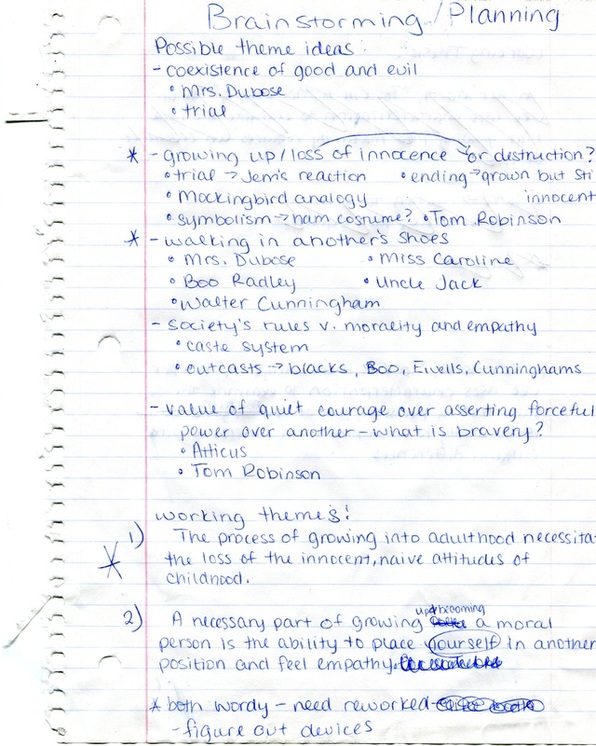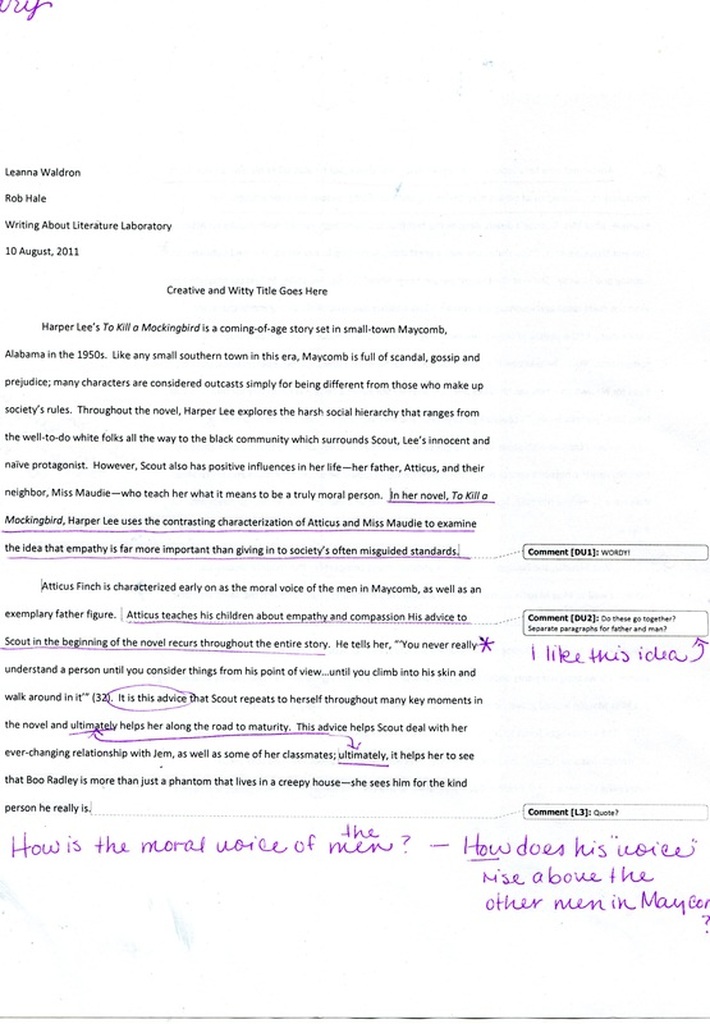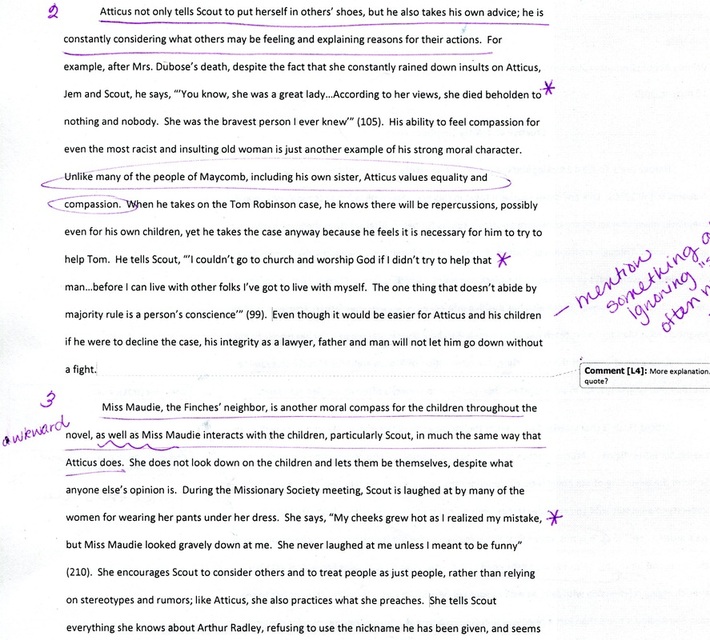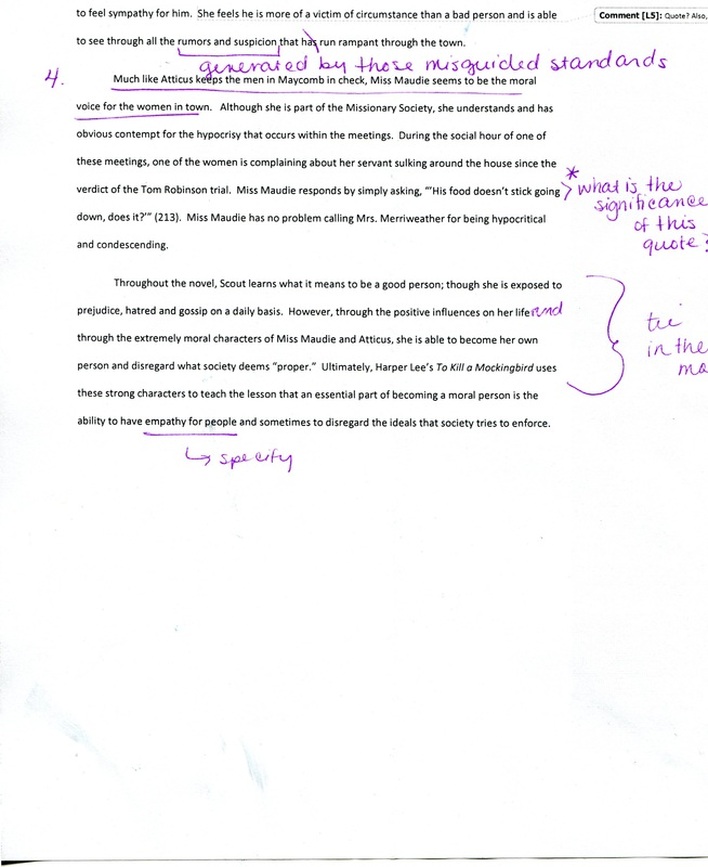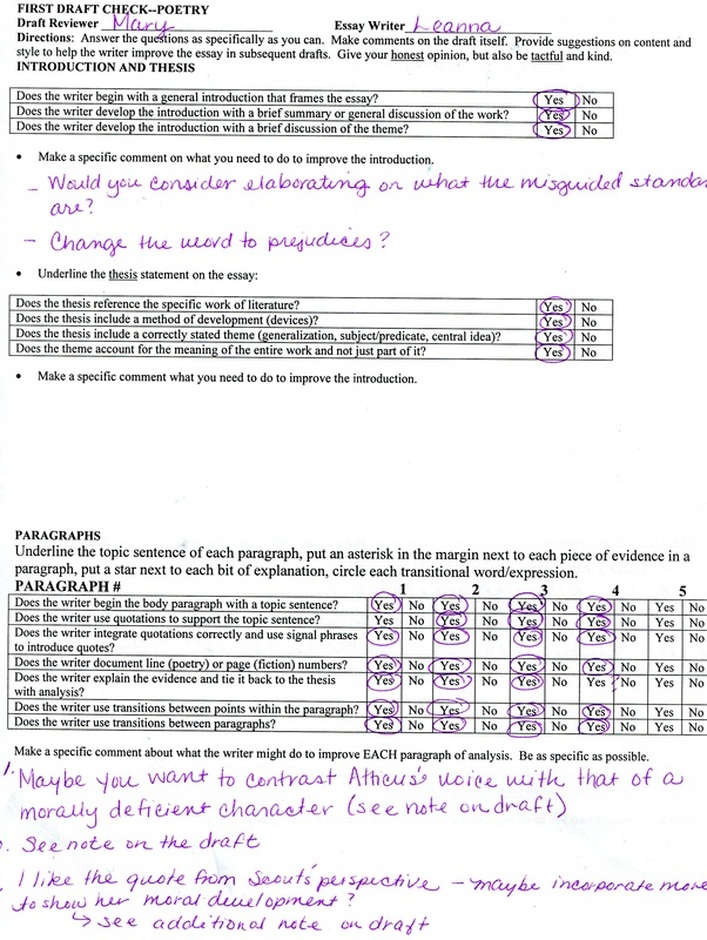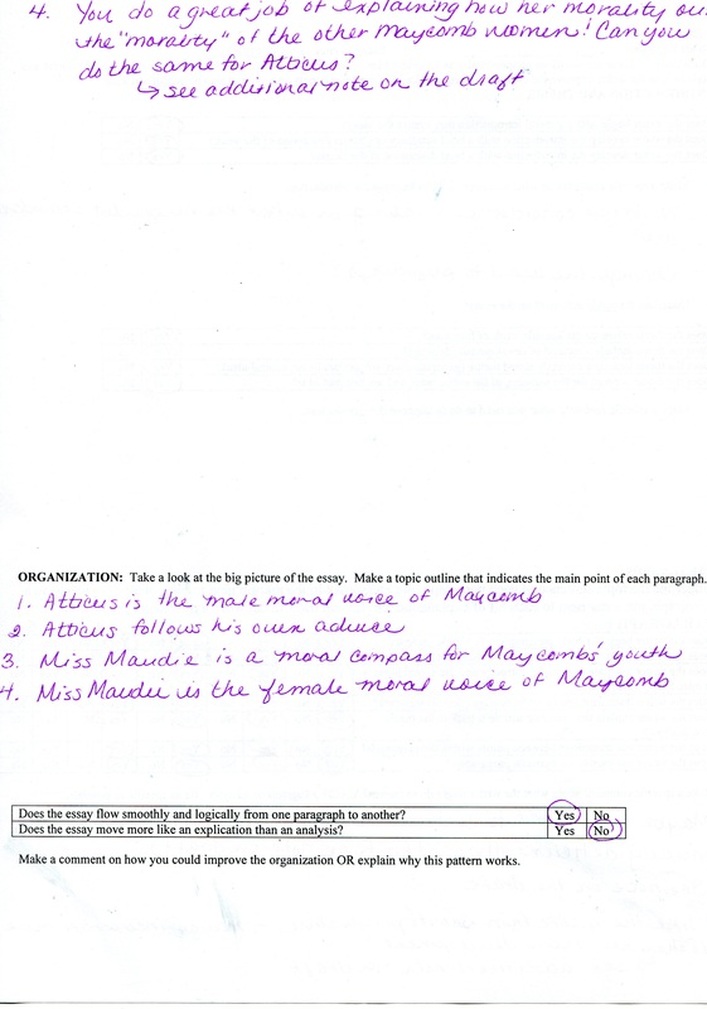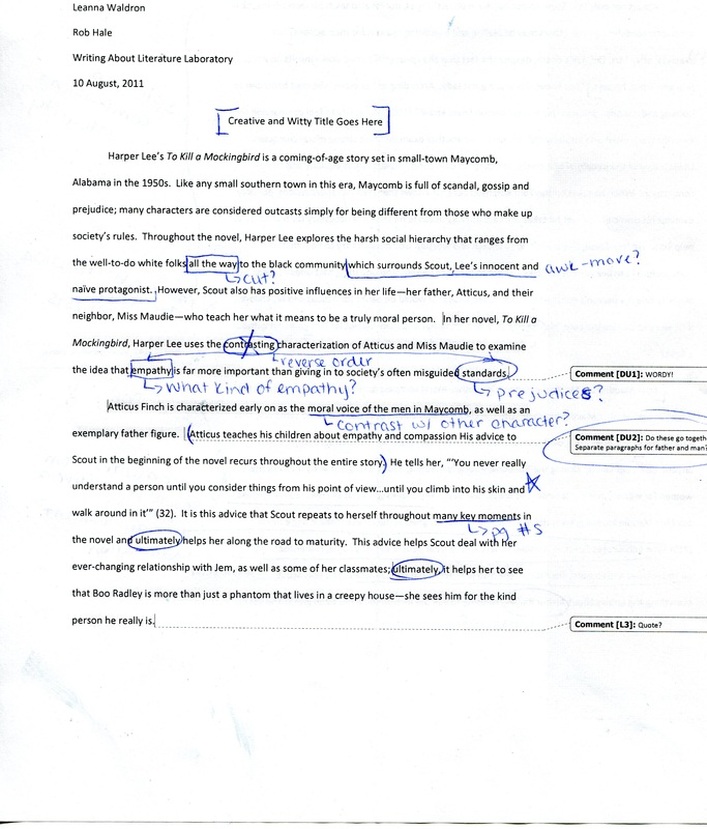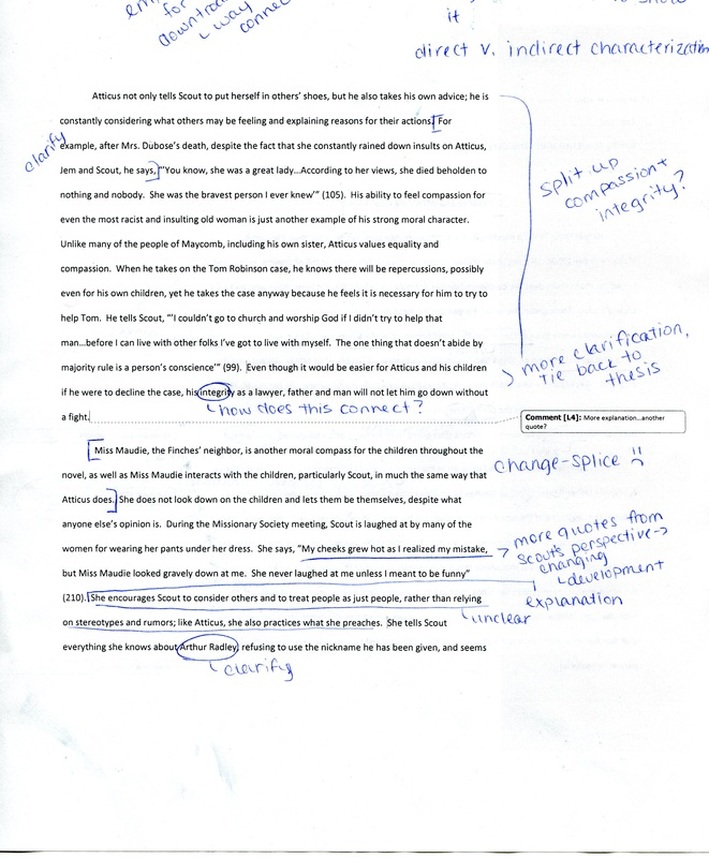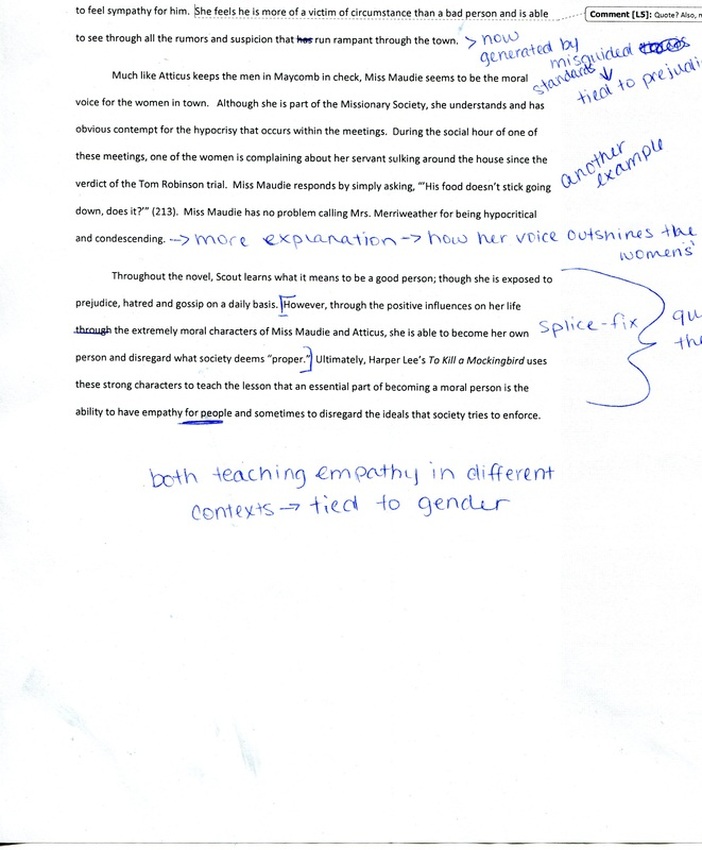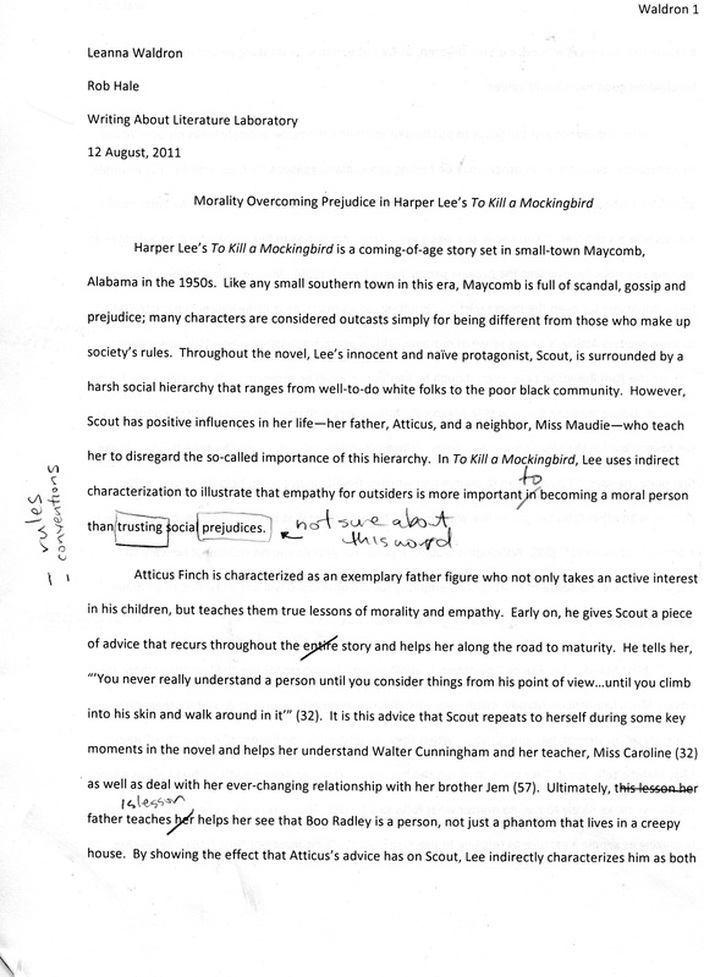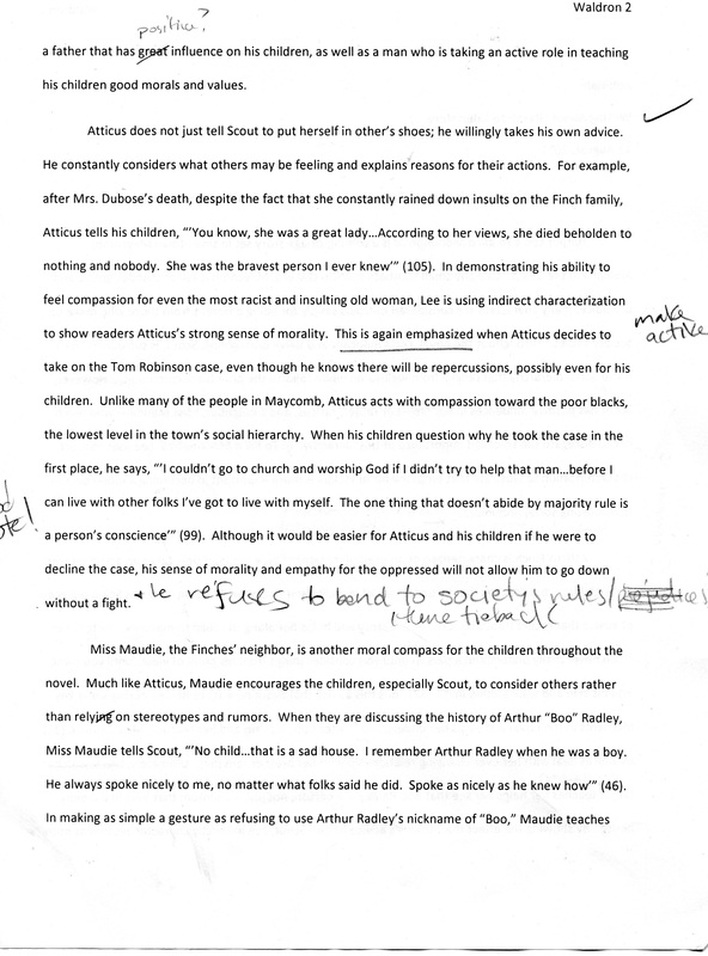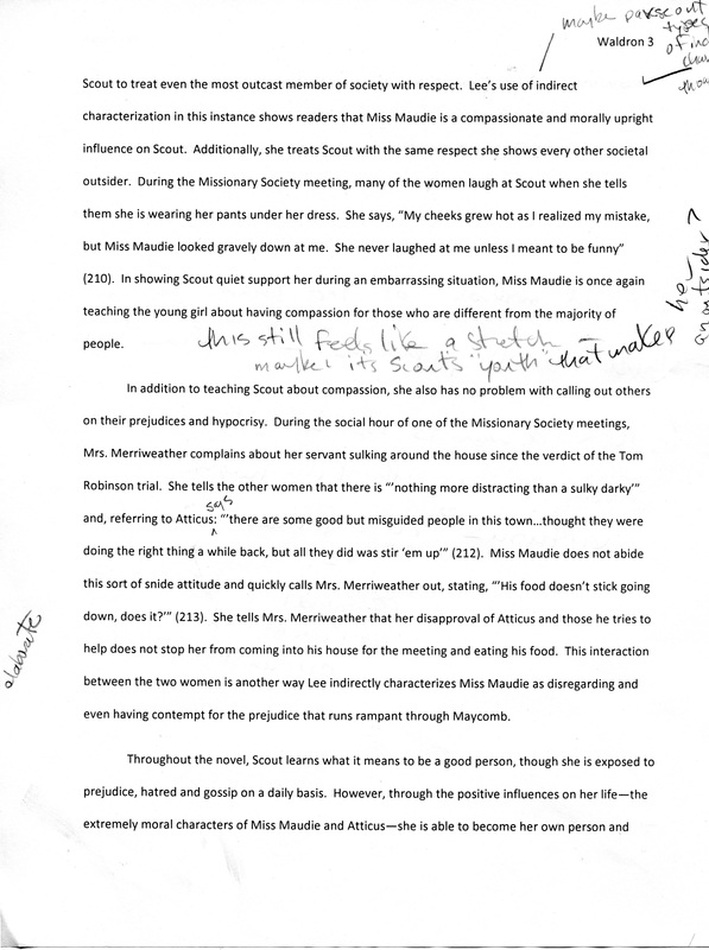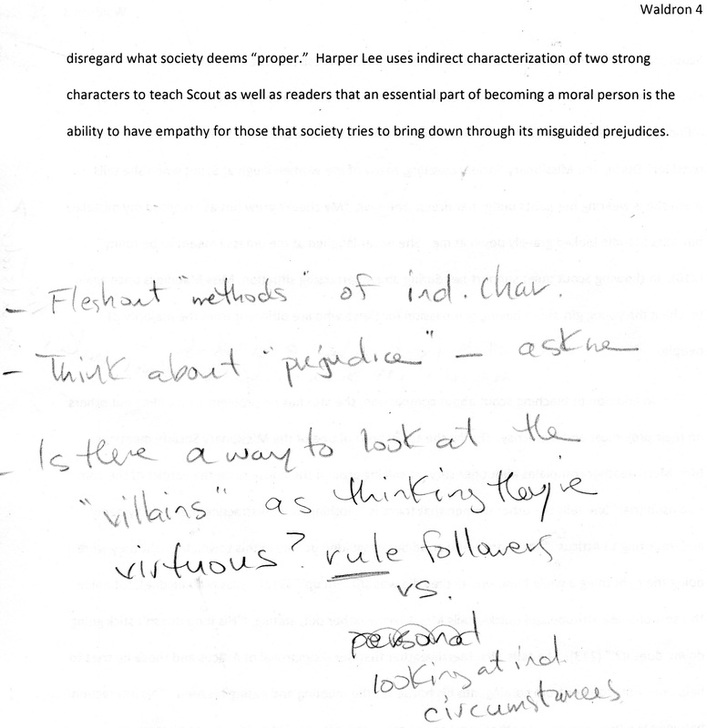To Kill a Mockingbird by Harper Lee
Analyzed by Leanna Waldron
INVENTING
These are just two of the many journal pages I created while reading the novel. Because the copy I was using was a library book, I didn’t want to mark in it. While reading, I made note of particular plot points, character interactions and quotes I thought were significant, rereading them afterwards and looking for big-picture connections and ideas for themes.
INVENTING and PLANNING
My writing process is very loose, so what tends to work for me is to combine the inventing and planning steps. After going through my notes and picking up on certain theme ideas, I list them and make notes of particular elements of the story that could support that theme. After this, I go directly into the drafting stage. Because I put far less focus on planning, I spend more time revising.
DRAFTING
Because my planning process is so loose, I tend to like to just jump straight into drafting. It is very trial-and-error for me and, often, I have to keep myself from revising as I draft and just get through the paper. I am very rarely satisfied with any portion of my paper within the first draft, which is why the next step of the process is particularly important for me in order to produce effective papers.
REVISING
This is my rough draft with Mary’s comments on it.
This is the peer review sheet that Mary filled out for my rough draft.
This is the copy of the rough draft I marked up during a conference with Professor Rob Hale, Mary, Carli and Cassie.
After the peer review session, I went back and revised my paper, merging all the comments that were made and using my best judgement on some of them. For me, the revision is much easier than the rough draft because, although there is a lot of work to do, there are concrete suggestions to work with and the skeleton of the paper is already in place to refine and build on. I also made some slight revisions between my second and third drafts, but nothing very substantial changed.
This is the copy of my third draft with Professor Rob Hale’s comments on it. After a conference with him over this draft, I went back and revised once again.
FINALIZING
Finalizing is typically the easiest part of the process for me. The bulk of the work is done and, through reading my paper aloud to myself, I can often catch small spelling and grammatical mistakes. This is typically the step where I insert my title (though sometimes one comes to me earlier) as well as my works cited page.
Here is a copy of the final draft of my paper.
Here is a copy of the final draft of my paper.

